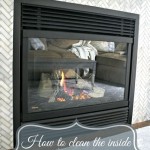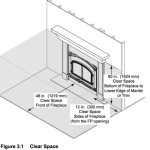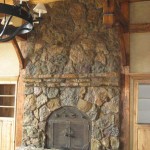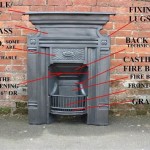```html
Rustic Fireplace Ideas: Embracing Natural Warmth and Timeless Appeal
A fireplace serves as a captivating focal point in a home, radiating warmth and fostering a sense of comfort and conviviality. A rustic fireplace takes this inherent appeal a step further, drawing inspiration from natural elements and time-worn textures to create a space that feels both inviting and deeply connected to the outdoors. The essence of rustic design lies in its unpretentious character, embracing imperfection and celebrating the raw beauty of materials. When considering rustic fireplace ideas, the possibilities are vast, ranging from subtle nods to nature to full-blown transformations that evoke the charm of a rural retreat.
The beauty of rustic fireplaces stems from their versatility. They can be adapted to suit a variety of architectural styles, from traditional cottages to modern farmhouses and even contemporary homes seeking a touch of organic warmth. Careful selection of materials, attention to detail, and a thoughtful approach to design are key to creating a rustic fireplace that seamlessly integrates with the surrounding environment and reflects the homeowner’s personal style.
Key Elements of a Rustic Fireplace
Several core elements contribute to the overall rustic aesthetic of a fireplace. Understanding these elements is crucial for crafting a design that resonates with the desired mood and atmosphere. These include the choice of materials, the style of the mantel, and the overall design of the hearth.
Natural Stone: The Foundation of Rustic Appeal
Natural stone is perhaps the most iconic element of a rustic fireplace. Its inherent texture, color variations, and organic forms evoke a sense of permanence and connection to the earth. Various types of stone can be used, each lending a unique character to the fireplace. Fieldstone, with its irregular shapes and earthy tones, provides a rugged, natural look, while river rock offers a smoother, more refined appearance. Ledgestone, characterized by its thin, stacked layers, creates a visually striking texture and adds depth to the fireplace surround. The selection of stone should complement the overall color palette and style of the room, creating a harmonious and cohesive design.
The application of the stone also plays a significant role in the final aesthetic. A dry-stacked stone fireplace, where the stones are fitted together without visible mortar, offers a more natural and rugged appearance. Mortared stone, on the other hand, provides a more finished and refined look. The choice between these techniques depends on the desired level of rustic charm and the overall style of the home.
Wood: The Warmth of Nature
Wood plays a crucial role in enhancing the warmth and character of a rustic fireplace. A substantial wooden mantel, crafted from reclaimed timber or solid wood beams, serves as a natural focal point and adds a touch of rustic elegance. The wood's natural grain, knots, and imperfections contribute to its unique character and tell a story of its past. Reclaimed wood, in particular, offers a sense of history and sustainability, adding depth and intrigue to the fireplace design.
Beyond the mantel, wood can also be incorporated into other aspects of the fireplace design. A wooden surround, crafted from shiplap or rough-hewn planks, can complement the stone facade and create a cohesive rustic aesthetic. Firewood storage niches, integrated into the fireplace design, provide both practical storage and visual appeal, further emphasizing the connection to nature. The type of wood selected for the mantel and other elements should be carefully considered to ensure it complements the stone and other materials used in the fireplace design.
The Hearth: A Foundation of Function and Style
The hearth is the area directly in front of the fireplace opening, providing a safe and functional space for embers and ashes. It also serves as an important design element, contributing to the overall aesthetic of the fireplace. A hearth crafted from natural stone, brick, or concrete can complement the stone facade and create a cohesive rustic look. The size and shape of the hearth should be proportional to the size of the fireplace opening and the overall dimensions of the room.
For a more rustic look, consider a hearth crafted from reclaimed brick or natural flagstone. These materials offer a sense of history and authenticity, adding character to the fireplace design. A raised hearth can provide additional seating and create a more dramatic focal point, while a flush hearth offers a more seamless and minimalist look. The choice of hearth material and design should be carefully considered to ensure it complements the stone facade, wooden mantel, and other design elements used in the fireplace design.
Rustic Fireplace Styles: From Farmhouse to Modern
Within the realm of rustic design, several distinct styles can be applied to fireplace construction, each with its own unique characteristics and appeal. These styles range from the cozy charm of a farmhouse fireplace to the more refined elegance of a mountain lodge design, offering a wide range of options to suit different tastes and preferences.
Farmhouse Fireplace: Cozy and Inviting
Farmhouse fireplaces evoke a sense of warmth, simplicity, and rustic charm. They often feature a combination of natural stone, reclaimed wood, and painted brick, creating a cozy and inviting atmosphere. A large, rough-hewn wooden mantel is a common element, providing a natural focal point and a place to display decorative items. Shiplap siding, painted in a neutral color, can be used to create a simple and elegant fireplace surround. A farmhouse fireplace often incorporates elements of functionality, such as built-in shelving or firewood storage niches.
The color palette for a farmhouse fireplace typically includes warm neutrals, such as creamy whites, soft grays, and earthy browns. Accents of color can be added through decorative items, such as throw pillows, blankets, and artwork. The overall look is relaxed, comfortable, and inviting, perfect for creating a cozy gathering space in the home.
Mountain Lodge Fireplace: Grand and Majestic
Mountain lodge fireplaces are characterized by their grand scale, natural materials, and rustic elegance. They often feature a massive stone facade, extending from floor to ceiling, creating a dramatic focal point. Large, exposed timber beams are a common element, adding to the rustic charm and architectural interest. Mountain lodge fireplaces often incorporate elements of the surrounding landscape, such as natural stone, wood, and antlers. A substantial wooden mantel is a key feature, often crafted from reclaimed timber or solid wood beams.
The color palette for a mountain lodge fireplace typically includes warm, earthy tones, such as deep browns, rich greens, and rustic reds. The overall look is grand, majestic, and inviting, perfect for creating a cozy retreat in a mountain home or cabin. The scale and proportions are important to consider, ensuring the fireplace complements the overall size and style of the room.
Modern Rustic Fireplace: A Blend of Styles
Modern rustic fireplaces blend the clean lines and minimalist aesthetic of modern design with the natural materials and textures of rustic design. They often feature a combination of natural stone, wood, and concrete, creating a sophisticated and inviting atmosphere. A sleek, minimalist mantel, crafted from wood or concrete, can complement the stone facade and create a focal point. The modern rustic fireplace often incorporates elements of simplicity and functionality.
The color palette for a modern rustic fireplace typically includes neutral tones, such as grays, whites, and blacks, with accents of natural wood and stone. The overall look is clean, sophisticated, and inviting, perfect for creating a stylish and comfortable living space. Focus is placed on the texture and quality of the natural materials rather than ornate details.
Material Considerations for a Rustic Fireplace
The selection of materials is paramount to achieving the desired rustic aesthetic. Each material contributes a unique texture, color, and character to the fireplace design. Thorough preparation and sourcing can affect the fireplace's character.
Stone Selection: Texture, Color, and Durability
Choosing the right type of stone is crucial for creating a rustic fireplace that reflects the desired style and atmosphere. Fieldstone, river rock, and ledgestone are all popular choices, each with its own unique characteristics. Fieldstone offers a rugged, natural look, while river rock provides a smoother, more refined appearance. Ledgestone creates a visually striking texture and adds depth to the fireplace surround. In addition to aesthetics, consider the durability and suitability of the stone for fireplace construction. Certain types of stone are more resistant to heat and moisture than others. It is also important to ensure that the stone is properly installed to prevent cracking or crumbling.
Wood Selection: Species, Finish, and Reclaimed Options
The type of wood used for the mantel and other elements of the fireplace plays a significant role in the overall aesthetic. Reclaimed wood offers a sense of history and sustainability, adding depth and intrigue to the fireplace design. Solid wood beams, crafted from hardwoods such as oak or maple, provide a substantial and durable mantel. The choice of wood species should complement the stone and other materials used in the fireplace design. Consider the wood's natural grain, color, and texture when making your selection. The finish applied to the wood can also affect its appearance. A natural oil finish can enhance the wood's natural beauty, while a stain can add depth and richness to the color. It is essential to use appropriate sealants and finishes when dealing with wood near a heat source.
Mortar and Grout: Color and Texture
The color and texture of the mortar and grout used in the construction of the fireplace can significantly impact its overall appearance. A natural gray mortar can complement the stone facade and create a cohesive rustic look. A tinted mortar can be used to add depth and richness to the color of the stone. The type of grout used should be appropriate for the type of stone being used. Sand-based grout is typically used for wider grout joints, while epoxy grout is more resistant to staining and cracking. The consistency and application of mortar and grout must be carefully controlled to assure structural integrity and appearance.
```
65 Best Stone Fireplace Design Ideas To Ignite Your Decor Designs Home Farmhouse

10 Rustic Fireplace Mantel Ideas Blog Red Door

19 Stunning Rustic Living Rooms With Charming Stone Fireplace Room Design Family Farm House

Fireplace Ideas For Your Home

A Rustic Fireplace Like Really Is Very Good Idea Architectural Digest

20 Rustic Stone Fireplace Ideas For Design Inspiration Field Mag

10 Fireplaces For Any Style Which One Is Yours

65 Best Stone Fireplace Design Ideas To Ignite Your Decor Designs Modern House Rustic Living Room

34 Cozy Farmhouse Fireplace Ideas To Curl Up Next

10 Fireplace Ideas Town Country Living
Related Posts








